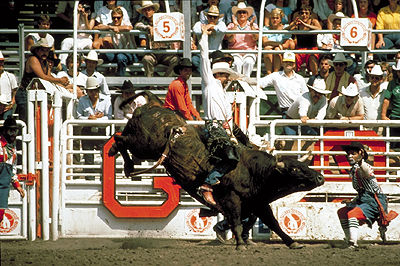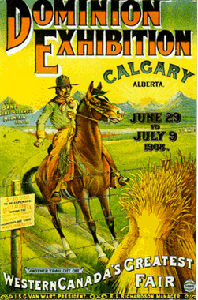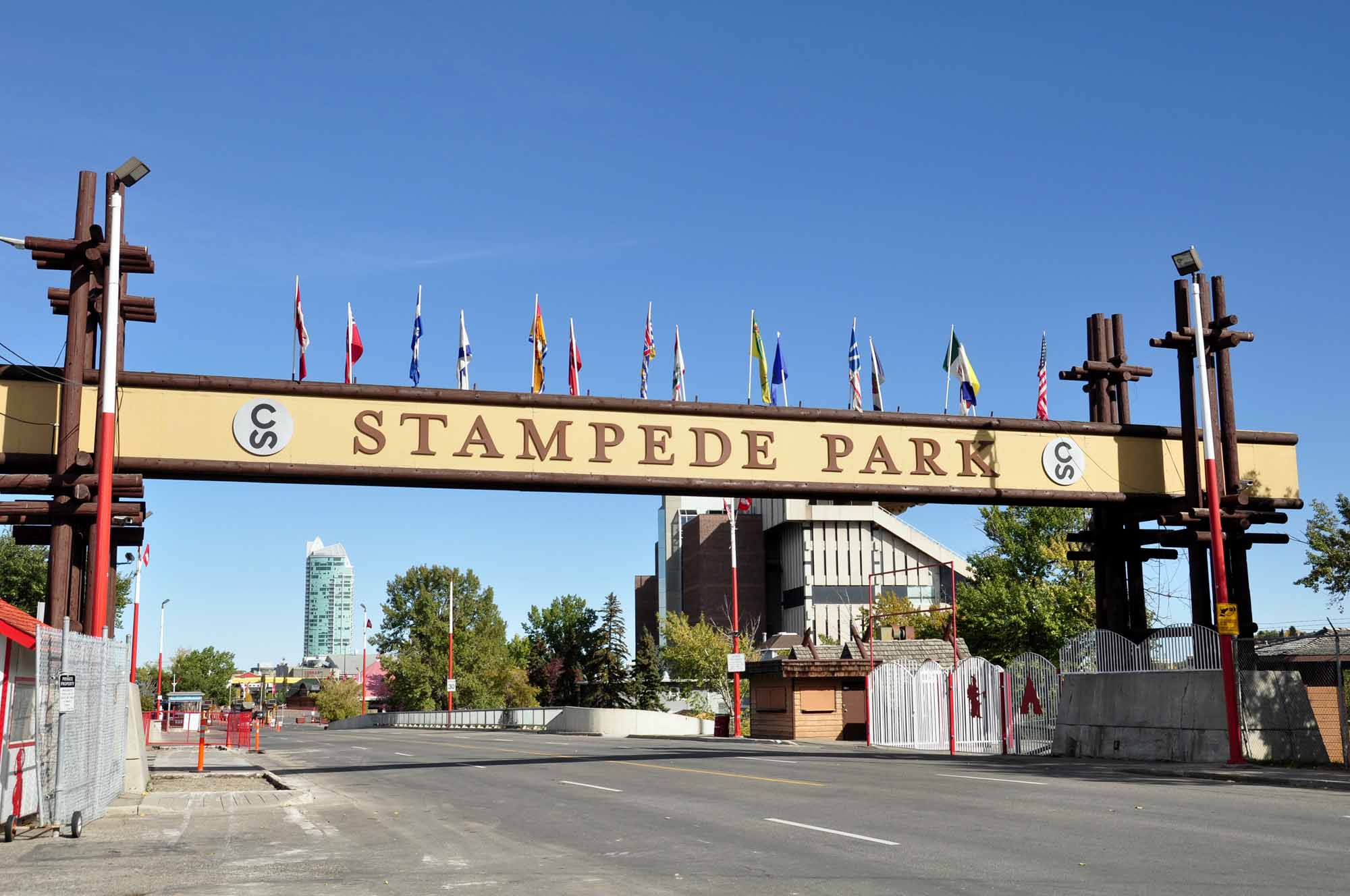Billed as the "Greatest Outdoor Show on Earth," the first exhibition took place in 1886 and the world-famous Stampede rodeo began in 1912, instigated by Guy Weadick, an American trick roper who had visited Calgary and judged the emerging town to be a prime location for a big rodeo. The first Stampede was financially underwritten by local businessmen A.E. Cross, George Lane, A.J. McLean and Patrick Burns. It was a great success.
The parade, combined with the annual Labour Day parade of the Calgary Trade and Labor Council, was enriched by rodeo competitors, the duke and duchess of Connaught and their daughter Princess Patricia, and 2000 Indigenous people in full dress - and some 14,000 spectators.
Prizes totalling $16 000 were provided for the rodeo events, which were highlighted by an electrifying bronc ride by Tom Three Persons on the famous Cyclone. In spite of its success, the Stampede was not repeated until after the First World War, in August 1919, when a "Great Victory Stampede" was held. In 1923 the annual Agricultural Exhibition joined with a stampede, with Weadick continuing as the Stampede Arena Director.
An immediate success, the joint venture has continued to this day. As its fame spread, the Stampede expanded its facilities to include a 16 000-seat grandstand, a large trade centre, the Stampede Corral ice rink, an agricultural complex, a recreated western town and a combined curling, tennis and trade show facility.
The rodeo events include the traditional tests of cowboy versus animal, with 6 major events: bareback bronc riding, saddle bronc riding, bull riding, barrel racing, steer wrestling and tie-down roping. There are also junior events, including novice bareback, novice saddle bronc, junior steer riding and wild pony racing. It is one of the largest rodeos in the world, with more than $2 million in prize money. In 2006, the Stampede made an innovative change by introducing tournament style rodeo. The contestants are divided into 2 pools, with cash prizes for each event, and the top 4 in each pool advance to Showdown Sunday, a single "go for broke" competition. The remaining competitors in each pool compete on Wild Card Saturday, with the top 2 continuing on to the Sunday event, at which more than $1 million is awarded.
Weadick, the Stampede's first director, first brought chuckwagon races, known as the Rangeland Derby, to the show in 1923, and they have become an outstanding spectator event. The wagons are modifications of the food wagons once used to supply meals to cowboys out on the range during roundup. Each wagon is pulled by 4 horses and accompanied by 4 mounted outriders. The race starts with a tight figure-8 manoeuvre in the infield before the wagons burst out onto the track for a dash around to the finish. There are 9 heats nightly, with teams competing for more than $1.15 million in prize money.
Did You Know?
After being introduced as a demonstration sport in 2017, “Indian relay racing” was added as a showcase event at the Calgary Stampede in 2018. Based upon traditional Indigenous horse races, Indian relay racing consists of one rider galloping a horse bareback at top speed, the rider acting as the relay “baton” and changing to a fresh horse with each lap (each team has three horses and riders are aided by three team members). In 2019, the event returned to the Stampede, including a team called “Thunder Beings” from the Kainai and Piikani First Nations (Treaty 7 nations from southern Alberta). In 2018, Kyle Peacock, a racer from Enoch Cree Nation in central Alberta (a Treaty 6 nation) called Indian relay racing “the oldest extreme sport in North America.”

Indian relay racing, 2012
(Courtesy of Jeff Few, Flickr)
In recent years the Stampede has faced allegations from animal rights groups, who cited animal cruelty during the Stampede and rodeos in general. In 1986, a total of a dozen horses were euthanized after collisions in chuckwagon races and accidents in various events. In 2002, 6 horses were euthanized after a disastrous pileup in the chuckwagon races, and in 2005 the worst accident in Stampede history occurred when 9 spooked horses plunged into the Bow River during the annual ride from Stampede Ranch to Calgary. Stampede organizers and participants have since been ordered to prove the safety of livestock during the events, and both internal and external investigations have cleared them of any culpability. Yet, Stampede organizers cancelled the annual trail ride indefinitely following the 2005 incident as a precaution.

 Share on Facebook
Share on Facebook Share on X
Share on X Share by Email
Share by Email Share on Google Classroom
Share on Google Classroom













